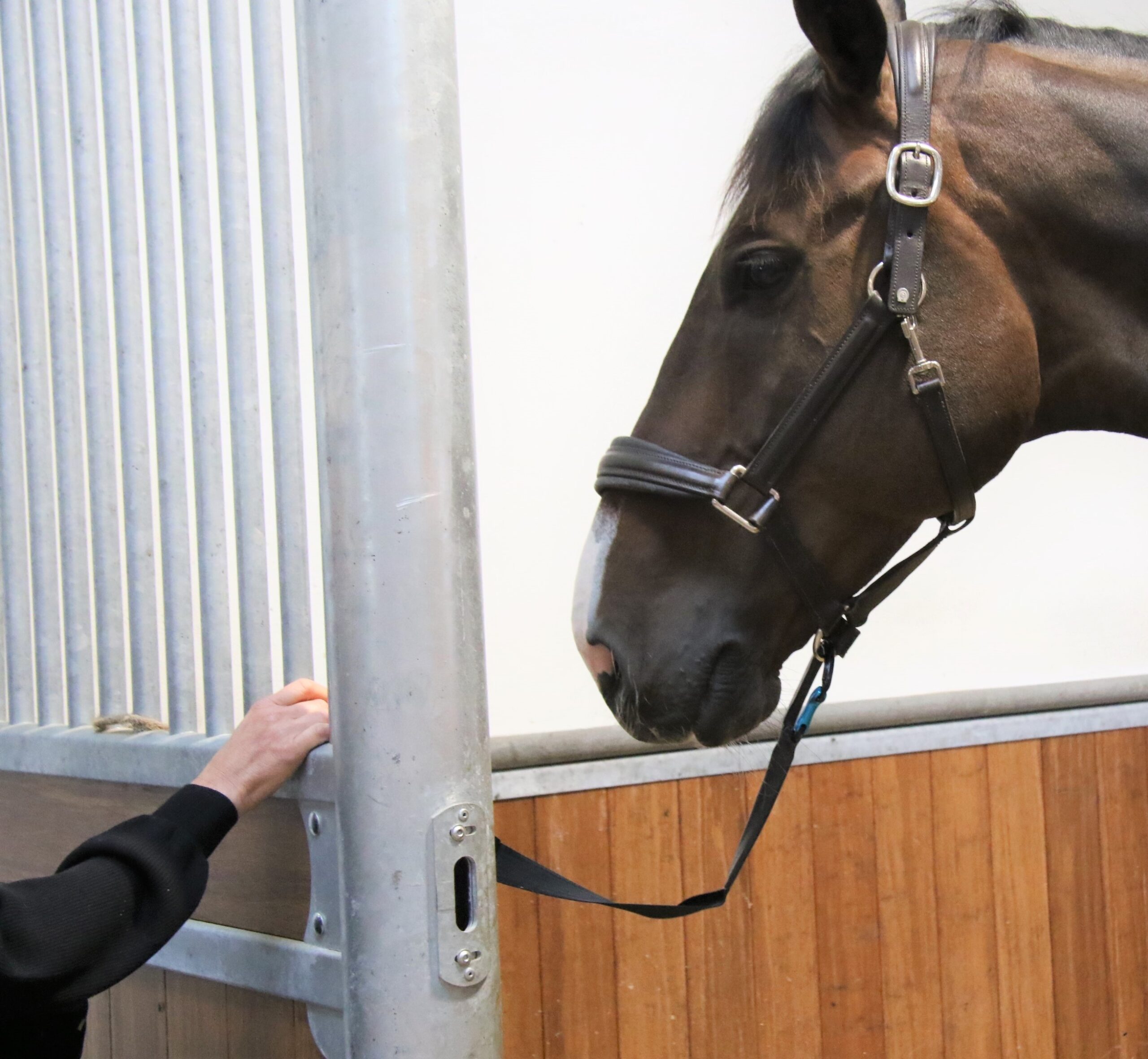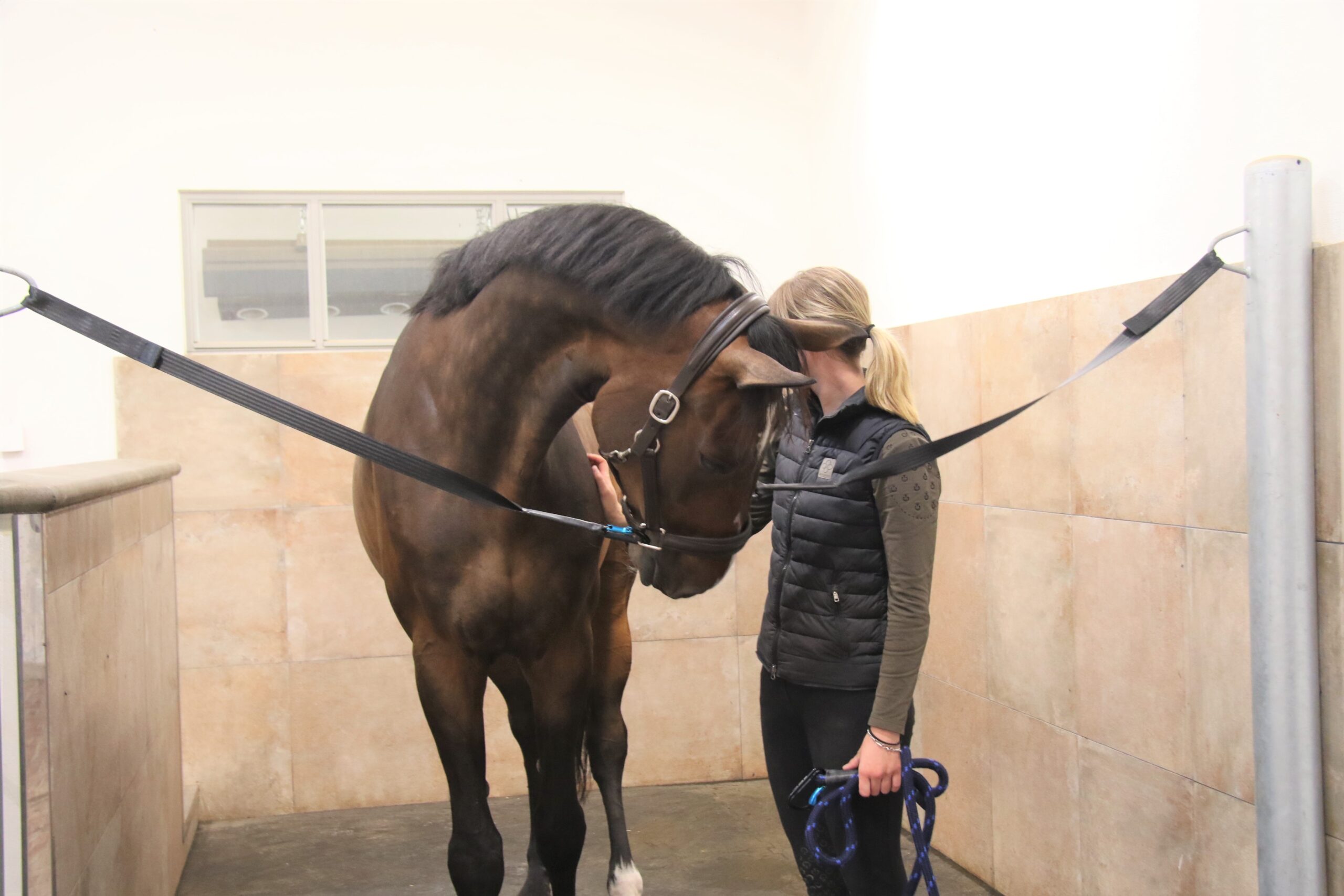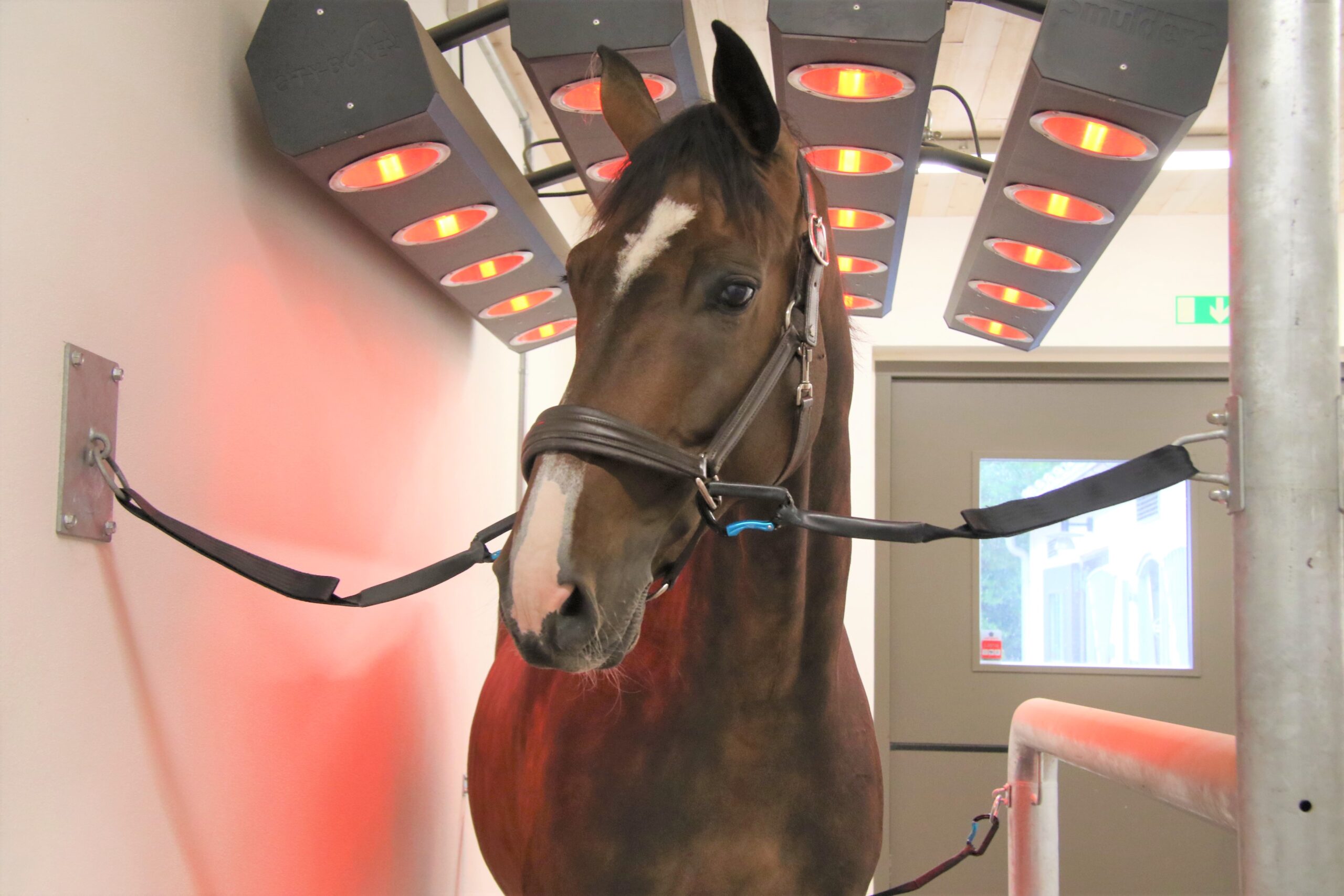Free delivery on all orders over €300. Standard Delivery Charge / €10 Read more
Training the horse to tie-up on the crosstie
Preparation
Step 1 – 2
Step 3 – 5
Remember
Preparation to tie-up safe the horse in the crosstie
Make every experience in the crossties as brief and enjoyable as possible for the horse.
When the horse is relaxed when doing work on the ground, it contributes to building a foundation that allows your horse to relax when tied up.
The training of the horse to crosstie can start when the crossties is safety installed. To minimize accidents there are some things to take into consideration when installing tie up in the stable/barn you can learn more in this section: How to tie a horse.
So before taking the horse out, organize all the tack and equipment next to the crossties so the horse doesn’t need to be left alone during the tie up. If you just tie them up and walk away, before they have the skill and manner, they might panic or pull back and hurt themselves. So, make sure everything is well thought through and the horses are well prepared for crossties in Easy Connect.
Step 1 – In the stall before the crosstie

The horse must understand and respond to halter pressure and give in when the horse is in-hand.
Starting to introduce the horse to tying up can begin in the stall. This is a place the horse already knows and is comfortable in. The box in the stable is also a smaller place where the horse feels safe and a bit more restricted.
At first, try to show the horse it is not alone and that you will stay with the lead rope hanging over a bar. You can offer the horse comfort through showing they are not alone when tied up.
Constantly try to work with positive reinforcement and reward the good behavior. This can be done, for example, through feed or a clue that signals that food is on the way.
It must be possible for the person to move around and scratch the whole horse in a relaxed state of mind. The horse should know how to quietly stand without pulling back or moving around.
It is also good if the horse knows a signal, like “whoa”, which tells the horse to stand still and stop moving around.
If the horse doesn´t stand still, just direct the horse back in the desired location and loop the lead rope over the bar and walk back to your original position.
Repeat this as many times as necessary until there is sign of relaxation (licking, chewing, resting back leg, softening of body, etc) . Then it is time to quit for the day.
Tying up in the stall when changing blankets and picking out hooves is a good step before moving to the crosstie area.
Note that stressed horses are slow learners because cortisol and prolactin pumps and effects the brain.
Step 2 – Standing in the crosstie area

Start slowly by simply place the horse in the crosstie area and keep his feet still and the attention focused on the handler.
With one hand on the safety lead rope, move to the side and gentle scratch the withers. The horse should stand still, even if the person is not standing in a leading position.
Step 3 – Relaxed in the crosstie area

The horse should associate the space with grooming and to feel relaxed in the crosstie area.
As practice before you must be able to move around the horse and the horse needs to get used to you moving around his body. Brush for example the horse’s neck and shoulders.
If the horse starts to move, just gently stop the horse with a sound, like “whoa”, and move it back into place.
Step 4 – Attach one tie-up

When the horse is comfortable with this training, go ahead and hook one of the carabiners to the rings of the halter.
A lead rope should still be attached to the halter, so it is easier to ask the horse to take a small step forward until it feels the halter pressure.
The horse needs to get comfortable with the idea of standing still and not being able to go forward.
Ask the horse to take small steps back until it feels pressure on the halter again, then say “whoa” and stop him.
Then move the horse to centre of the ties and stay with the horse.
Remember to breath deep and relaxed. Always give the horse lots of praise with gentle scratches when the horse tries to keep it relaxed.
Step 5 – Start moving around the crosstie

At this point, if your horse seems comfortable with the lesson so far, it is possible to start moving around the horse’s body and stroke it.
As the horse becomes more confident, attach both sides of the crossties and then take away the safety lead rope.
After some training in the crossties, the horse will learn to quietly stand in the crossties by itself, and it is possible to extend the time that is required of the horse to stand patiently.
Just take the process slowly and give the horse as much or as little support as it need.
It must be the horse’s choice to stand still and rest, so they learn how to enjoy it.
Remember

Horses need to be introduced gradually to being tied up and with other activities going on around them.
Take into consideration is what is happening in proximity to where the horse is cross tied.
- Are other horses, wheel barrows passing in front of the horse?
- Can the horse see other horses or see vehicles moving outside?
- What is the level of noise?
- Is a farrier banging shoes in the cross-ties beside the horse you are trying to train?
If the horse is worried, then it is better to get help from a more experienced person or move the horse into another area until it has calmed down.
Both crossties should be attached to the horse, because leaving one undone allows the horse to move around and could result in a dangerous situation.
NEVER, EVER tie up your horse to anything else than the halter or leave your horse without supervision – accidents can happen very fast and result in traumatic experience.

